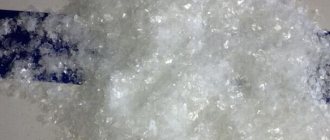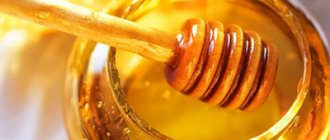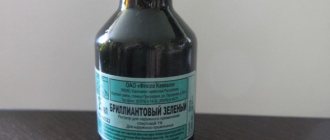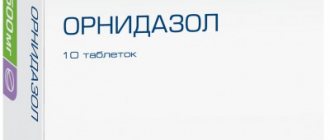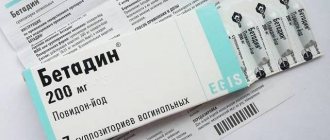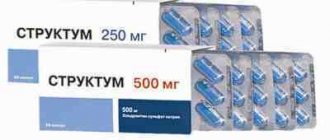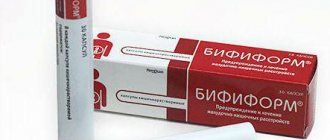Description of Japanese kelp
Laminaria japonica
is a large marine brown algae, the thallus of which consists of a ribbon-shaped smooth or reticulate-wrinkled plate 10-35 cm wide, 1-13 m long, in the lower part turning into a cylindrical or compressed-cylindrical trunk 50-100 cm long. Thallus ( thallus) it is attached to the rocky soil by highly developed root-like outgrowths - rhizoids. The edges of the plates are smooth or wavy. The entire plant is permeated with mucous passages and lacunae. The plate is destroyed annually, and a new plate grows from the remaining stem. The lifespan of kelp varies from 2 (Sea of Japan) to 3-4 years (northern seas) depending on climatic conditions. The spore containers (sporangia) mature from July to October. From the spores, microscopic female or male growths develop, forming sex cells - gametes.
Japanese kelp
Saccharina japonica, Laminaria japonica, Laminaria ochotensis Taxon
: Laminariaceae family
Other names
: seaweed, kombu, tashima, haidai
English
: Brown Algae, Devil's Apron, Kelp, Kombu, Laminaria, Sea Girdles
The name of the genus comes from the Latin word lamina - plate.
Types[ | ]
Laminaria digitata
. Cyanotype by Anna Atkins (1843)
- Laminaria abyssalis
ABJoly & ECOliveira[1][2] - Laminaria agardhii
Kjellm.[3][4] - Laminaria angustata
Kjellm.[5][6] - Laminaria appressirhiza
Yu.E.Petrov & Vozzhinsk.[7] - Laminaria brasiliensis
ABJoly & ECOliveira - Laminaria brongardiana
Postels & Rupr.[8] - Laminaria bulbosa
JVLamour. - Laminaria bullata
Kjellm. - Laminaria complanata
(Setch. & NLGardner) Muenscher - Laminaria dentigera
Kjellm.[9] - Laminaria diabolica
Miyabe - Laminaria digitata (Huds.) J.V.Lamour. — Laminaria palmate dissected
- Laminaria ephemera
Setch.[9] - Laminaria farlowii
Setch.[9] - Laminaria hyperborea
(Gunnerus) Foslie - Laminaria inclinatorhiza
Yu.E.Petrov & Vozzhinsk. - Laminaria japonica Aresch. — Japanese kelp, or Kombu (algae)[5][10]
- Laminaria multiplicata
Yu.E.Petrov & Suchov. - Laminaria nigripes
J.Agardh - Laminaria ochroleuca
Bach.Pyl. - Laminaria pallida
Grev.[11][12] - Laminaria platymeris
Bach.Pyl. - Laminaria rodriguezii
Bornet - Laminaria ruprechtii
(Aresch.) Setch. - Laminaria saccharina () J.V.Lamour. — Kelp sugar, or Laminaria sugar
- Laminaria sachalinensis
(Miyabe) Miyabe - Laminaria setchellii
PCSilva - Laminaria sinclairii
(Harv. ex Hook.f. & Harv.) Farl., CLAnderson & DCEaton[9] - Laminaria solidugula
J.Agardh - Laminaria yezoensis
Miyabe
Where does Japanese kelp grow?
Japanese kelp
grows along the northwestern shores of the Pacific Ocean, from the islands of Hokkaido and Honshu, through the chain of the Kuril Islands to the Kamchatka Peninsula, then along the northern coast of the Sea of Okhotsk, south to Sakhalin Island and southeast to the Tatar Channel near the city of Wonsan in Korea.
Japanese kelp
is distributed south to 36° north latitude. High seawater temperatures in summer (above 27 °C) in more southern latitudes destroy brown seaweed. Laminaria forms extensive thickets in the coastal strip at a depth of 1 to 20 m, on rocky and shell soils.
Distribution and habitat
Seaweed is widespread in the Seas of Japan, Okhotsk, White and Kara Seas. Forms dense thickets on open banks with constant water movement.
Procurement of raw materials . Operates from June to September. It is collected after a storm using a long “kanza” pole or a special scythe. Laminaria is dried in the sun, and crushed into powder into the pharmacy.
Security methods . The thickets are restored only after 2 years, so harvesting in different areas for collecting raw materials is recommended.
External differences . All varieties of kelp have a color of light olive, dark olive, greenish-brown, black-green, red-brown. The surface of the plant is covered with a white coating of salts, and the taste is correspondingly salty.
Collection and preparation of Japanese kelp
The best time for harvesting Japanese kelp is from late June to mid-July. The plate of Japanese kelp reaches its greatest length in the tenth day of May, but the maximum yield of dry weight of algae is recorded a month later, when the sea water temperature is about 15.2°C. A fresh weight to dry weight ratio of 6.5:1 or higher indicates the ideal time to harvest. To prevent loss of biomass, collection is carried out until the sea water temperature rises above 17°C. Laminaria is cleaned of foreign impurities and dried in the sun. Dried thalli (water content less than 22%) are coarsely crushed and placed in cardboard boxes or linen bags. Store in a dry place for up to 3 years. On rainy or cloudy days, the drying time of kelp increases, which can lead to deterioration in product quality. In such cases, kelp is salted for temporary storage, and when favorable weather arrives, it is dried. Salting kelp is done in two ways: washed for several minutes in a saline solution, or sprinkled with salt between layers. Salted kelp can be processed for human consumption, but it is not suitable for extracting iodine, mannitol (D-mannitol) and algin, or for feeding livestock. From 1 hectare of sea garden, up to 100 tons of green kelp mass are collected. Algae thickets are restored after 2 years.
Laminaria - composition, beneficial medicinal properties and contraindications
To understand the beneficial properties and contraindications for the use of kelp seaweed, it is necessary, first of all, to study its composition. According to the information I gleaned from books on medicinal plants, seaweed contains:
- An extensive range of minerals - iodine, boron, bromine, vanadium, silicon, cobalt, arsenic, chlorine, strontium, magnesium, cadmium, sodium, lithium, iron, calcium, sulfur, copper, zinc, potassium, phosphorus, aluminum, manganese, nickel , rubidium, selenium, fluorine.
- Vitamins – B1, B2 (riboflavin), B3, B6, B9 (folic acid), B12, C, E, D, PP (nicotinic acid), K, beta-carotene.
- Organic substances - proteins, nonessential and essential amino acids, Omega-class polyunsaturated fatty acids, saturated fatty acids, nitrogenous bases, phytosterols, polysaccharides, fiber.
This algae is also very hydroscopic, absorbing, like a sponge, everything that flows through it, and primarily water. This is clearly demonstrated by the fact that 100 g of raw material contains 81.58 g of water. But the highlight of kelp is one unique substance called Fucoxanthin. Its main functions are to give seaweed its brown color and, when it enters the body of mammals, to increase the consumption of adipose tissue, converting it into thermal energy. By the way, besides kelp, fucoxanthin is found only in golden algae and diatoms and nowhere else. As you can see, my dears, our heroine has a rich composition, let’s now figure out why this is useful for us.
Laminaria - beneficial properties and indications
According to the statements of the same herbalists, as well as herbalists, brown algae kelp has three main properties, namely:
- Laxative, which is determined by the ability of seaweed to absorb any liquid and mucus-like substances. At the same time, the algae particles increase in volume, irritating the intestinal mucosa, thereby forcing it to actively move and push out feces and accumulated toxins.
- Hypolilipidemic, that is, reducing the fat content in the blood, which clearly has a beneficial effect on the entire body.
- Thyroid, that is, saturating the body with iodine, by the way, iodine in kelp is presented in the form of organic compounds, which allows the body to absorb it as productively as possible.
However, the list of beneficial properties of seaweed does not end there, because there are a number of additional benefits that also need to be mentioned. Here is a list of these additional therapeutic manifestations:
- Vascular strengthening, in this case this effect is facilitated by iodine salts, which heal the thyroid gland. After all, when the thyroid gland is healthy, then the cardiovascular system will be normal.
- It is a blood purifier, since kelp thalli have the property of reducing and removing bad cholesterol, radionuclides and heavy metal salts from the blood.
- Hypotensive, because clean blood + plaque-free vessels = normal blood pressure.
- Improves the functioning of the digestive tract. This is achieved, firstly, by getting rid of constipation and normalizing stool, and secondly, as a result of activation of metabolic processes and sufficient formation of digestive juices and enzymes.
- Fat burning, which is facilitated by the substance Fucoxanthin, which converts fat deposits into thermal energy.
- Strengthens the immune system, which is facilitated by the normalization of the thyroid gland, the cleanliness of blood vessels, and the saturation of the body with such a rich set of vitamins and mineral elements.
- Hormone-restoring, here we must also thank the presence in kelp of a large amount of easily digestible iodine. After all, it heals the thyroid gland, the queen of the entire endocrine system.
- Wound healing, which is ensured by the presence in kelp of a large amount of alginic acid, a substance widely used in the treatment of skin diseases and first aid for burns with boiling water and other thermal options. By the way, this property of seaweed has found wide application in cosmetology as wraps and various masks for the face and whole body.
- The alpha and beta carotene found in seaweed, as well as iodine salts, have this effect on the visual apparatus, improving visual acuity. The former nourish the retina with essential vitamins, while the latter ensure normal communication between the optic nerves and the visual center in the brain and high-quality blood supply.
All of the listed properties are possessed with equal strength by both dried and fresh kelp, and algae in powder or tablet form. Thanks to such extensive medicinal effects, seaweed is used as an auxiliary medicine in the treatment of many diseases, and according to numerous reviews from doctors, it works quite effectively. Here is a list of indications for the use of this brown medicine:
- Diseases of the thyroid and parathyroid glands - hypothyroidism, endemic goiter, Graves' disease;
- Diseases of the gastrointestinal tract - atonic constipation, chronic colitis and enterocolitis, various gastritis and peptic ulcer;
- Failures and disturbances in the functioning of the sexual sphere - primarily in cases of menstrual irregularities, the presence of premenstrual syndrome, the initial development of mastopathy and menopausal changes, which is undoubtedly important for many women. And also for sexual weakness and various ailments with the prostate in men, especially if these ailments are associated with a lack of iodine or work in hazardous enterprises or in an area with high radiation;
- Pancreatitis and diabetes mellitus;
- Diseases of large joints - arthritis and arthrosis, especially the hip and knee joints;
- Diseases of the cardiovascular system - primarily hypertension, atherosclerosis and obliterating endarteritis;
- Various metabolic disorders - obesity, gout;
- Decreased visual acuity, especially if it manifests itself as photophobia, and is associated with a lack of iodine in the body;
- Diseases of the skin and mucous membranes - periodontitis and periodantosis, abrasions, cuts and burns.
As you can see, the healing power of kelp has a fairly wide range of applications, regardless of whether it is dry or fresh algae. I specifically looked at online pharmacies to see what the price was, and was pleasantly surprised. The dry product from Evalar costs 160 rubles, and the thalli from 140 rubles, both weighing 100 g. Agree that many medicines containing iodine cost much more, but whether they will help is still a big and fat question. Below I will tell you how to take kelp in certain cases, and now I propose to look at the list of contraindications to its use, because there are also those.
Laminaria - contraindications for use and side effects
Since seaweed is one of the natural medicines, in addition to its beneficial medicinal properties, it has contraindications and even side effects. I will say right away that there are very few of them, but it is imperative to know them and exclude them before starting to take this product, here is this modest list:
- Individual intolerance to any of the constituents of the algae;
- Nephritis and/or nephrosis;
- Hemorrhagic diathesis;
- Furunculosis or acne;
- Chronic pyoderma
- Hyperthyroidism and multinodular goiter;
- Manifestations of acute abdomen, intestinal obstruction, appendicitis and other acute conditions of the abdominal organs;
- Children under 14 years of age;
- Use caution during pregnancy and breastfeeding.
Regarding the last point, for women in an interesting position and nursing mothers, a contraindication to the use of kelp is a controversial issue. Some doctors say that in small quantities, up to 20 g per day, sea kale can be taken by pregnant and lactating women, while others say that it is not possible. In any case, women in this category should seriously consult with a gynecologist leading the pregnancy or a pediatrician monitoring the development of the baby before starting to include this algae in their diet. In general, I strongly recommend consulting with at least a local therapist before starting to use any medicinal plant, even for the healthiest and most athletic people, and kelp is no exception.
Another pressing question is whether there are any contraindications for kelp wraps. It turns out there is. These include pustular skin lesions, furunculosis, acne, periods of exacerbation of any dermatitis and dermatoses, as well as individual intolerance and allergy to iodine salts. By the way, due to excessive passion for eating or external use of seaweed, side effects from an overdose of iodine may also appear. They manifest themselves as allergic reactions, hives, excessive salivation or lacrimation, sudden runny nose, cough and increased general temperature. But don’t be alarmed, this phenomenon happens extremely rarely and only with very strong abuse of algae. For these phenomena to disappear, it is usually enough to simply stop taking the seaweed, and in order to prevent troubles, it must be used correctly, let's figure out how.
Pharmacological properties of Japanese kelp
Sea kale
It has long been used in medicine in eastern countries (China, Japan, etc.) as a general tonic for various diseases. Previously, the effect of kelp was associated only with the presence of organic iodine compounds in it, which is part of the thyroid hormone and promotes increased protein assimilation and better absorption of phosphorus, calcium and iron, activating a number of enzymes. There are indications that under the influence of iodine, blood viscosity decreases, vascular tone and blood pressure decrease. Laminaria reduces plasma cholesterol and delays the development of atherosclerosis.
Laminaria - description and composition
Kelp
(brown algae) have a thallus body and also roots, which are called rhizodes. With their help, the plant is attached to surfaces. The thallus can reach 12 meters in length, it is smooth or wavy. Kelp grows very actively on the seabed. The average depth at which algae begin to grow is 10 m. Sometimes they settle deeper.
Kelp contains at least 70 vitamins, minerals, enzymes and proteins. It contains B vitamins, magnesium, calcium, potassium, iron and iodine.
Composition and energy value of brown algae:
- Calorie content.
30 g of kelp contains 12 kcal, which is 1% of the daily caloric intake of an adult. - Fats.
There are only 0.2 g of algae in 30 g. And half of them are saturated fatty acids. Kelp contains omega-3 (2.2 mg) and omega-6 (5.6 mg). Their regular intake into the body helps prevent the development of heart and vascular diseases. - Vitamins.
Laminaria is a source of vitamins, including: vitamin A, B2, B1, B12, B6, pantothenic and folic acid. There is enough vitamin K in a serving of algae to cover a person’s daily requirement by 23%, and phthalate by 13%. Eating kelp allows you to charge the body with energy and normalize metabolic processes at the cellular level. - Minerals.
30 g of kelp contains 8.9 mg of potassium and 16.8 mg of calcium. Brown algae are a source of manganese, iron, copper and zinc. - Selenium.
This trace element, along with iodine, is responsible for the regulation of thyroid hormones. - Sterols.
These substances thin the blood, prevent the formation of blood clots, and prevent cholesterol from depositing in the vessels. - Sodium.
This mineral is beneficial for the gastrointestinal tract. It resists the absorption of toxic metals (cesium, plutonium, mercury, cadmium) in the intestines. - Polysaccharides.
Their entry into the body allows you to normalize metabolic processes, stabilize blood sugar levels, and regulate water-salt balance. Polysaccharides from kelp prevent the formation of blood clots. - Niacin.
This substance contained in kelp makes the skin healthy, radiant, and helps get rid of age spots. - Algin.
It protects the body from the effects of radiation.
Only seaweed contains natural vitamin D.
The use of Japanese kelp in medicine
In medicine, sweet kelp (Laminaria saccharina), palmate kelp (Laminaria digitata), Japanese kelp (Laminaria japonica), Clouston kelp (Laminaria cloustoni), narrow kelp (Laminaria angustata) are used.
Sea kale is used for the treatment and prevention of endemic goiter, hyperthyroidism, mild forms of Graves' disease, for chronic and acute enterocolitis, proctitis, as a laxative and laxative for chronic constipation.
- Laminaria is used as an antidote for upper respiratory tract diseases in people working with barium salts and radionuclides. The active principle is considered to be alginic acid, which binds harmful compounds. Laminaria is used in the form of inhalation. A teaspoon of dried kelp is infused for an hour in 200 ml of water, inhalations are carried out for 5 minutes, the course of treatment consists of 10 sessions.
- Seaweed is used with positive results for gout. Laminarin contained in seaweed reduces the number of mitoses in sarcoma cells and inhibits its development.
- When prescribing seaweed for therapeutic and prophylactic purposes, the body’s physiological need for iodine is taken into account and does not exceed it.
Laminaria for weight loss
The composition of the plant is a whole complex of vitamins and minerals, due to which the product is widely used for weight loss.
Kelp for weight loss is important for the following reasons:
- removes excess fluid from skin cells;
- relieves swelling;
- prevents the appearance of cellulite;
- improves metabolic processes in the body;
- improves skin tone;
- is a low-calorie product.
You can lose weight with the help of kelp quite easily, the main thing is to adhere to the basic rules for using this product. You can use the product in dried form, you can make special body scrubs or anti-cellulite wraps with algae, prepare a powder, and add to salad.
In one week you can lose about 5-6 kg, and this is a pretty good result, considering the fact that you don’t have to do exhausting physical exercises and go on a strict diet.
Medicinal preparations of Japanese kelp
- Seaweed powder, which is leathery plates of greenish-brown color, often with a whitish coating (crystallized mannitol), with a peculiar smell and slightly salty taste, is prescribed 1/2 teaspoon per day. The course of treatment is 15-30 days. Take at night by shaking the powder in water.
- In order to prevent endemic goiter, seaweed is prescribed at the rate of 1 tsp. powder for a week, which corresponds to approximately 500-200 mcg of iodine.
- For obesity accompanied by increased appetite, seaweed is poured with cold water for a day, after which this water is drunk 1-2 sips to satisfy the feeling of hunger.
Recipes for cosmetology and traditional medicine
Compresses for osteochondrosis
Dried kelp is soaked in warm water, placed on gauze and a warm compress is applied to the sore joints. The duration of the procedure is 15-20 minutes. It is recommended to do it every evening before bed until the pain becomes less intense.
Toning face mask
To prepare a mask at home you will need: 1 teaspoon of kelp powder, 1 teaspoon of white clay, a few drops of essential oil from any citrus and 2 tablespoons of water. All ingredients must be thoroughly mixed until the lumps are completely dissolved. It will be more convenient to apply the mask with a special brush. The procedure time is 10-15 minutes. At the end, the dry mask should be washed off and the usual cream appropriate to your skin type should be applied to your face.
13, total, today
( 172 votes, average: 4.59 out of 5)
How to cook to lose weight?
Pollock: benefits and harm
Related Posts
Results of scientific research on Japanese kelp
- In the study, various methods were tested to extract fucoidan from kelp, including the use of three different extractants: chitosan, HACC and CPAB. Taking into account the extraction speed and price-quality ratio, chitosan was chosen as the optimal fucoidan extractant. Fucoidan, which is a sulfated heteropolysaccharide, has a wide range of biological activities: as an anticoagulant, it has antithrombotic, anti-inflammatory, and antitumor effects.
- The aim of the study was to examine the effect of Laminaria japonica polysaccharides (LJPS) on lipid and leptin metabolism in hyperlipidemic mice that were administered various doses of LJPS (75 mg/day, 150 mg/day, 300 mg/day) for four weeks. Total cholesterol, triglycerides, free fatty acids and leptin were determined in the blood serum of mice. The results indicate that Laminaria japonica polysaccharides reduce blood lipid levels and improve leptin resistance.
- A glycoprotein isolated from Laminaria japonica (LJGP) has significant cytotoxic activity against human cancer cells. However, the mechanisms of its cytotoxicity are poorly understood. In the study, treatment with LJGP resulted in growth inhibition and induction of apoptosis in AGS gastric cancer cell culture. In addition, LJGP treatment also caused a progressive decrease in cyclooxygenase (COX)-2 expression levels without significant changes in COX-1 levels, which correlates with a decrease in prostaglandin E2 synthesis.
KELP
The oldest plants on our planet that managed to survive all natural disasters are algae. In the process of evolution, the strongest representatives of this class remained, Laminaria (English Kelp, Latin Laminaria), which will be discussed, among them is considered, perhaps, the most popular. It is used in cooking, cosmetology, and medicine. In everyday life it is called seaweed, although in appearance it bears little resemblance to the familiar vegetable. Long, up to 12 meters, greenish-brown ribbons of kelp form entire thickets in the turbulent coastal waters of the Northern Hemisphere. Since time immemorial, it has been used in the nutrition and medicine of peoples living near seas and oceans. Ancient healers believed that kelp rejuvenates and prolongs life. Today, the unique properties of this algae have been confirmed by numerous studies. What caused this popularity?
History of the use of kelp
Since ancient times, sea kale has been used by residents of the northern coastal countries, Japan, Korea and China as a medicinal crop. According to the ancient Sumerian legend, the Sumerian king Gilgamesh, more than 5 thousand years ago, tried to find the healing herb of immortality under water. At the end of his life, he found it, but failed to save it for posterity. Subsequently, this legend was continued. Chinese physician Sun Hsi-mao in the 7th century. in his fundamental work “The Main Golden Recipes” he recommended treating goiter with kelp. Emperor Kangxi of the Manchu Dynasty was concerned about the growing number of goiter patients in the Munkend Province. Kangxi, according to the recommendations of Chinese doctors, ordered every resident of the province to consume 5 pounds of seaweed annually.
To fulfill this order, its supply was organized at state expense even to the most remote areas of the Chinese Empire. Laminaria was brought to some areas of Turkestan, where local doctors “hakimi” treated goiter with it. Medicines made from sugar kelp were used by ancient Polynesian doctors to treat intestinal diseases. Residents of the coastal Pacific regions of South America used infusions and decoctions of kelp to treat the thyroid gland. Since the 12th century. in coastal countries - France, Ireland, Norway, Scotland - seaweed was used to treat and prevent goiter.
However, humanity learned about the active ingredients of kelp only at the beginning of the 19th century, when the French saltpeter chemist Bernard Courtois first found iodine in seaweed and isolated it. Thanks to this discovery, iodine is still obtained from seaweed in Japan. Laminaria is the first sea plant that humans began to eat. Kelp dishes were known to the ancient Romans and British. Today, seaweed can be seen almost every day at the dinner table in the coastal regions of Europe (Ireland, Scotland) and Southeast Asia. In Japan, there are more than 300 types of seaweed dishes. In terms of the number of dishes, only potatoes can be compared with kelp. Dry seaweed - "kobu" - is an important export item of Japan. The word “kobu” itself means “to rejoice”, “to have fun”.
Who gets kelp and how?
The leading countries for the cultivation of brown algae are undoubtedly Japan, China, South and North Korea. In these countries, kelp is grown on an industrial scale using various types of reclamation work. The first experiments in breeding Japanese kelp, accidentally introduced in the 1920s. to the Yellow Sea were started in China. Currently, more than 1.4 million tons of seaweed are produced annually from plantations in China. Since 1962, kelp began to be cultivated in North Korea and was very successful.
Recently, kelp has also begun to be intensively cultivated in Japan, where until 1970 it was mainly obtained from natural thickets. Currently, Japan is the leader in the production and processing of seaweed. Almost the entire northern coast of the country (near Hokkaido Island and the northern part of Honshu Island) is used for kelp farming. The area of kelp plantations in the coastal waters of the island. Hokkaido is over 1,700 hectares. Here kelp is a favorite basis for a wide variety of dishes and delicacies; it is added to soups, meat dishes, and served in salads. Every year the Japanese eat several tens of thousands of tons of seaweed.
Scientists associate the absence of goiter and scrofulous diseases in children on the Japanese islands, and the low level of nervous diseases with the consumption of this unique algae. It has been proven that kelp contains the entire complex of substances necessary to restore health after various extreme exposures, especially after radiation exposure or heavy metal poisoning. In Russia, mainly two types of kelp are of commercial importance: sugar kelp, growing off the northern coast of Russia, and Japanese kelp, growing off the Far Eastern coast.
In cold seas at a depth of 5-9 meters you can find entire kelp forests. In the White Sea, algae is harvested off the coast of the Solovetsky Islands. Here algae grow in an ecologically clean natural environment. Algae have no roots, they get all their nutrients from water, so the cleaner the sea, the better the kelp. In this regard, the White Sea compares favorably with others: there is no navigation on it due to the long winter, it is covered with ice for half the year, and there are no hazardous industries or oil and gas production enterprises. Therefore, the White Sea wild kelp is especially highly valued. Algae is extracted only by hand, otherwise the surface of the seabed is disturbed, and in such a place kelp stops growing. There is even a name for the profession of the person doing this work - “twitcher”. Harvesting kelp begins in June and continues until September. The main value is the thallus of two-year-old kelp, since it is in it that by two years the maximum amount of useful substances accumulates and contains less liquid.
Alternative uses of Laminaria
Laminaria has long established itself in the field of cosmetology as one of the best natural means of preserving youth and beauty. In some sources, this algae is referred to as “a marine analogue of ginseng.” Many global brands, such as Vertera and Voya, produce products based on it, and in beauty salons, procedures with kelp are traditionally in greatest demand. However, using this brown algae for cosmetic purposes does not require much effort and can easily be done at home.
Use of Japanese kelp on the farm
Seaweed has been widely used in China and Japan as a food product since ancient times. A wide variety of dishes are made from it: soups, vegetable purees and even candied sweets. Laminaria has long been considered a dietary product that maintains vigor and health. In a study funded by the Korean Ministry of Education, gasoline (C5-C9) and diesel (C10-C17) hydrocarbon fractions were obtained from kelp seaweed biomass through catalytic pyrolysis. The huge reserves of kelp biomass make it a promising source of energy (bio-oil) in the future.
Beneficial features
Dried kelp is used in the treatment of the following diseases:
- cancer prevention;
- thyroid diseases;
- anemia;
- avitaminosis;
- obesity;
- impaired metabolism;
- constipation;
- immunostimulating effect;
- reduces high cholesterol;
- anti-sclerotic effect;
- reduces thrombosis;
- helps cope with loss of strength, stress, depression;
- improves memory;
- increases libido.
Laminaria is one of the most iodine-rich foods, which helps remove various harmful substances from the body, including heavy metals and lead. Iodine also has a good effect on the general condition of the thyroid gland, in particular, it can cure hyperthyroidism, endemic goiter, and Graves' disease. People with similar diseases are recommended to eat bread baked with the addition of dry kelp. If you have a bread machine, you can also produce a similar product yourself if you add 0.4 mg of kelp per kilogram of bread.
A little history
From the history of China it is known that in the 13th century. An order was issued by one of the emperors, obliging all citizens to annually consume a certain amount of seaweed as a dietary and prophylactic remedy. To implement this order, delivery of seaweed was organized at state expense even to the most remote regions of the then huge Chinese Empire. Cabbage was even brought to areas of Turkestan that were unfavorable with regard to goiter, and for a long time local healers, the hakims, treated this disease with seaweed.
Which cabbage should you not eat?
If kelp, the price of which in a pharmacy is about 50 rubles per pack, was extracted from the Barents Sea, it is better not to purchase it, since the waters in this region are very polluted. Therefore, inquire about the manufacturer of the product.
You should not take canned and pickled seaweed, as it contains additives that are harmful to health. This raises great doubts about the beneficial properties of the product. Therefore, buy dried kelp, which is sold in regular pharmacies. It is sold in the form of briquettes, plates, and can be crushed or in powder form. During its production, moisture was extracted, while all valuable microelements and vitamins were completely preserved.
Contraindications for use
Preparations based on seaweed are available in pharmacies without a prescription. Despite this, it is important to consult a doctor before use to avoid possible complications.
In what cases should you not use seaweed?
- With thyroid dysfunction;
- kidney diseases;
- glomerulonephritis,
- hyperthyroidism,
- tuberculosis,
- malfunction of the gastrointestinal tract;
- food allergies;
- iodine intolerance;
- under 2 years of age;
- during pregnancy and lactation.
On the one hand, the harm from the plant is minimal. But we should not forget that algae accumulate substances from the environment. These can also be toxins that are hazardous to health.

